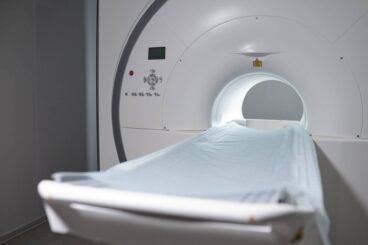X-rays and MRI (Magnetic Resonance Imaging) are both diagnostic imaging tools used by medical professionals to get a better look at the internal structures of the body.
X-rays are a form of electromagnetic radiation that can pass through the body and create an image on a special film or digital detector on the other side. X-rays are typically used to create images of dense structures such as bones, teeth, and metal objects that are difficult to see with the naked eye. They are quick and relatively inexpensive to perform, and can often be done on an outpatient basis.
On the other hand, MRI uses powerful magnetic fields and radio waves to generate detailed images of the body’s internal structures. Unlike X-rays, MRI does not use ionizing radiation, which can be harmful to the body. MRI can provide more detailed images of soft tissues such as muscles, tendons, and ligaments, as well as organs like the brain, heart, and liver. However, MRI is generally more expensive and time-consuming than X-rays, and may not be appropriate for certain patients, such as those with certain types of implants or pacemakers.
In summary, X-rays and MRI are both diagnostic imaging tools used by medical professionals to get a better look at the internal structures of the body. X-rays use electromagnetic radiation to create images of dense structures such as bones, while MRI uses powerful magnetic fields and radio waves to generate detailed images of the body’s internal structures, including soft tissues and organs. While X-rays are quick and relatively inexpensive, MRI provides more detailed images but is generally more expensive and time-consuming.
MRIs are often more useful than X-rays in certain situations because they provide more detailed images of soft tissues and internal organs, which can be particularly important in diagnosing certain medical conditions.
While X-rays are good at detecting bone fractures, they are not as effective at visualizing soft tissues such as muscles, tendons, and ligaments. For example, an X-ray may show a broken bone, but it may not show the extent of damage to the surrounding soft tissue. This is where an MRI can be particularly useful, as it can provide detailed images of soft tissue structures and reveal any damage that may not be visible on an X-ray.
In addition, MRIs can provide valuable information for diagnosing a wide range of medical conditions, including brain and spinal cord injuries, tumors, and joint injuries such as torn ligaments or cartilage. MRIs can also provide more detailed images of internal organs, such as the heart, liver, and kidneys, than X-rays.
Another advantage of MRI over X-rays is that it does not expose the patient to ionizing radiation, which can be harmful to the body in high doses. This is particularly important for patients who need to undergo frequent imaging tests, such as those with chronic medical conditions.
Overall, while X-rays are useful in certain situations, such as detecting bone fractures, MRIs are often more useful because they provide more detailed images of soft tissues and internal organs and do not expose the patient to ionizing radiation.
